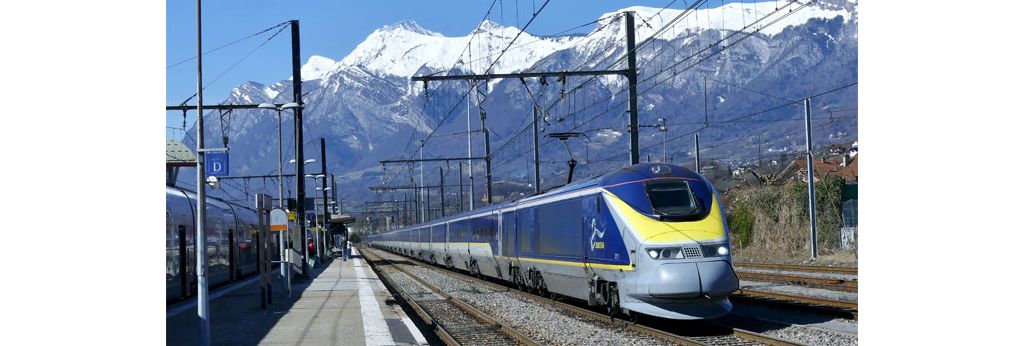The good news about rail


Editor’s Note: This article was originally published by the European Transport Forum (ETF), a platform for open debate on the future of European Transport, to provide insights on hot topics dealing with mobility. The views expressed do not necessarily reflect an official position of Volvo.
Furthermore, this article was originally published on December 09, 2020 and updated for accuracy and comprehensiveness.
According to the Community of European Railway and Infrastructure Companies (CER), European railways have lost €50bn in revenue due to the pandemic. To help the industry after these major losses, the year of 2021 was named by the European Commission as ‘The European Year of Rail’. Through multiple initiatives and events, it aimed to encourage citizens and businesses to opt for rail over more polluting transport modes, helping Europe to meet its climate targets under the European Green Deal.
Even though ‘The European Year of Rail’ was not a spectacular success, it helped to enrich new long-distance rail service launches in Europe and emphasized the important role that the rail sector plays in helping the EU achieve its commitment of becoming climate neutral by 2050.
Rail transport is fundamental for achieving sustainable low-carbon mobility in Europe, and as said by Frans Timmermans, Executive Vice-President for the European Green Deal: “To reach our climate targets, emissions from the transport sector must get on a clear downward trend.” Therefore, the European Commission recognized the need for rail investments and committed to doubling the high-speed rail traffic across Europe by 2030 and the rail freight traffic by 2050.
Rail transport is a sustainable, safe and comfortable mode of transport that could play a significantly larger role in the EU’s low-carbon mobility transition. Unfortunately, for now it only represents 7% of passengers and 11% of goods in the whole EU.
Due to the global pandemic people are becoming more environmentally conscious, which can benefit the rail sector. Nonetheless, to live up to the Commission’s commitments and maintain the momentum, the European rail sector will have to take strong actions to strengthen the attractiveness of the railways to increase the number of passengers.
The focus must be put on ensuring safety, health, increased line capacity and competitive fares, as well as better interconnections and the ongoing revival of night trains. Finally, all European plans for rail investment must be backed up by parallel actions taken by the national governments and rail industry at the EU Member States level.
ORIGINAL ARTICLE 09/12/20: Railways were already set for a renaissance this year as the transport of choice for eco-conscious travellers and freighters. The climate crisis has changed people’s relationship with mobility, shifting them away from driving – not only for their emissions but because of the frustration of sitting in congested traffic. The coronavirus could give it even more of a boost.
The Year of Rail
The European Union wants trains to be the poster child for its Green Deal for Europe environmental agenda. In June, EU governments agreed that 2021 should be the ‘European Year of Rail’, which will feature a range of events and campaigns to attract more people and goods to trains.
The Year of Rail aims to not only encourage the use of trains but increase the capacity of rail infrastructure, support passenger rights and promote through-ticketing. It ties in with the EU’s Fourth Railway Package, which effectively creates a single market for rail, giving operators more freedom to provide services across different member states: this should spur competition, boosting the number of trains running and reducing ticket prices.
More and more resources are being directed towards rail: governments are finally stumping up the billions needed to handle the extra traffic. Rail is prioritised in the EU’s pandemic recovery package, with extra aid to boost high-speed services and support night-trains if they displace air routes. Air France’s government bailout includes the condition that it no longer compete with rail on certain routes.
An attractive alternative
Germany has launched a €86 billion plan to modernize and expand its creaking railway system. Building is set to start on a vast €15 billion railway tunnel under the Baltic Sea to connect Finland and Estonia. On June, 24 European countries agreed to work together on international rail transport and make it “an attractive alternative” over distances where it is currently not competitive.
So how does coronavirus change the equation? There is little settled conventional wisdom about the eventual consequences of Covid-19, which has so shaken our world.
When it comes to transport, the initial indications were that lockdowns and work-from-home orders would diminish the overall personal mobility – at least for commuting and for work-related trips.
That trend appears to be confirmed: a recent report from the UBS bank says the pandemic could speed the shift of passengers from air to rail. Planes are grounded and airlines are struggling to survive, while rail market conditions are improving and attitudes to trains are changing, it says.
Saving 5 million tonnes in carbon emissions
The UBS Evidence Lab report, ‘By train or by plane?’ says, “liberalisation should improve frequency and affordability. 2019 and 2020 mark the inflexion point for the industry.” It predicts rail will grow 10% every year this decade, while there will be approximately 800 more high-speed trains in operation in Europe. If the shift to rail from flying and driving continues, UBS says this could save as much as five million tonnes in carbon emissions during the next ten years.
There is still much to be done to improve rail, notably by resolving cross-border problems for infrastructure, services and timetables. Despite carrying 17% of the EU’s freight and 8% of passengers, railways account for only 3% of the bloc’s transport emissions (road transport is responsible for more than 70%). But like trains themselves, the shift towards bigger and better rail – though slow to start – is finally generating momentum